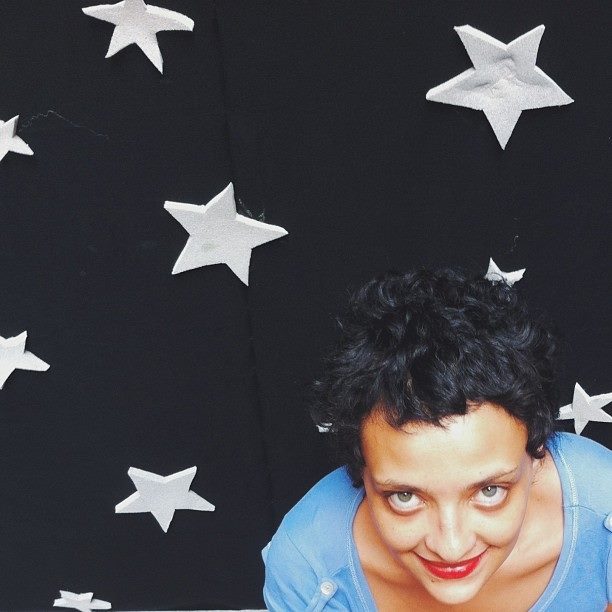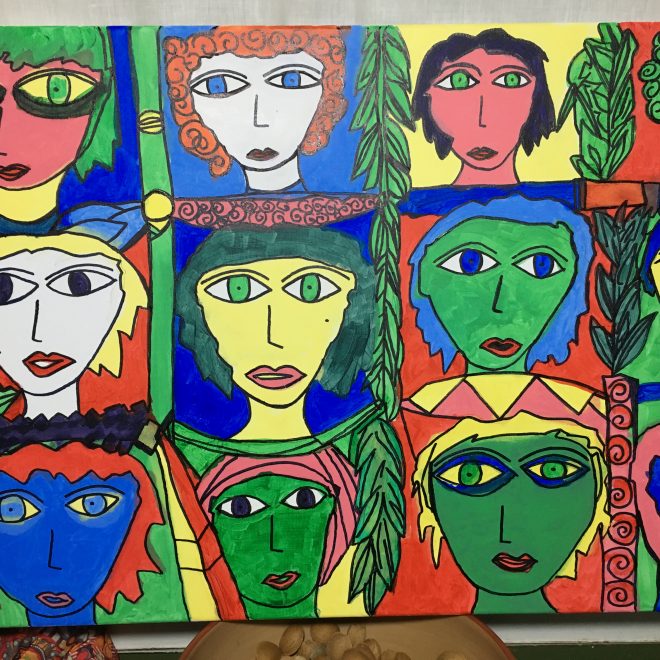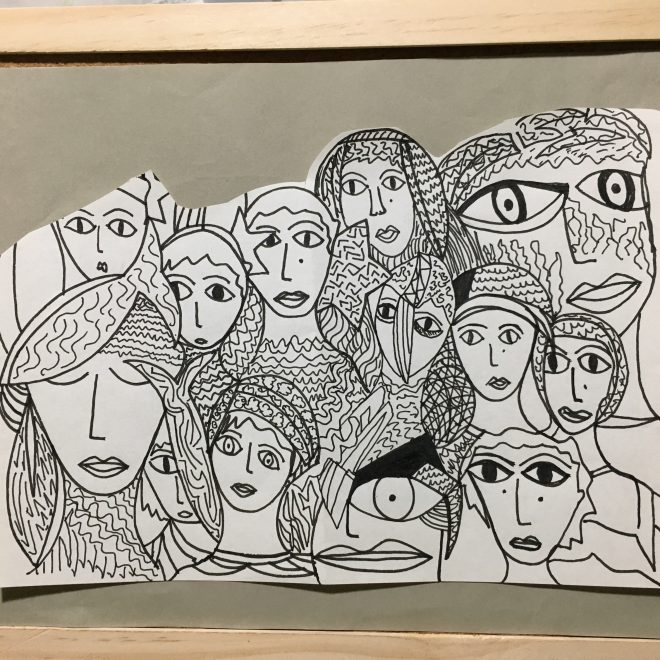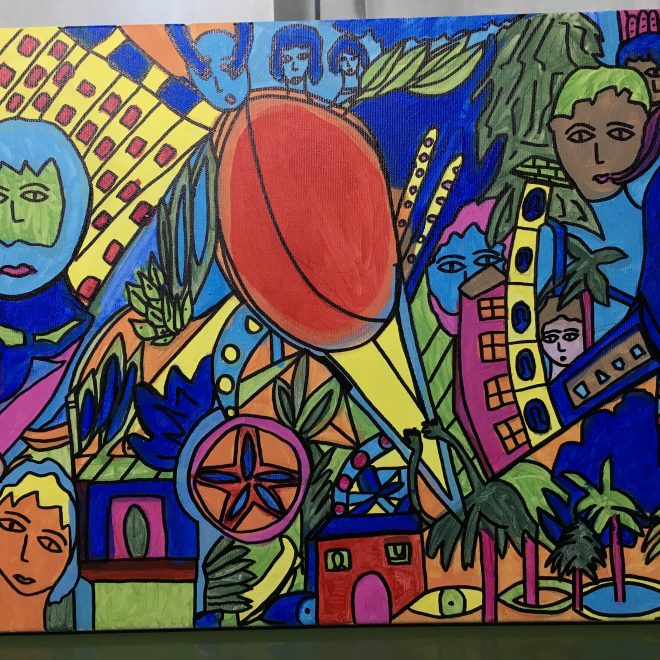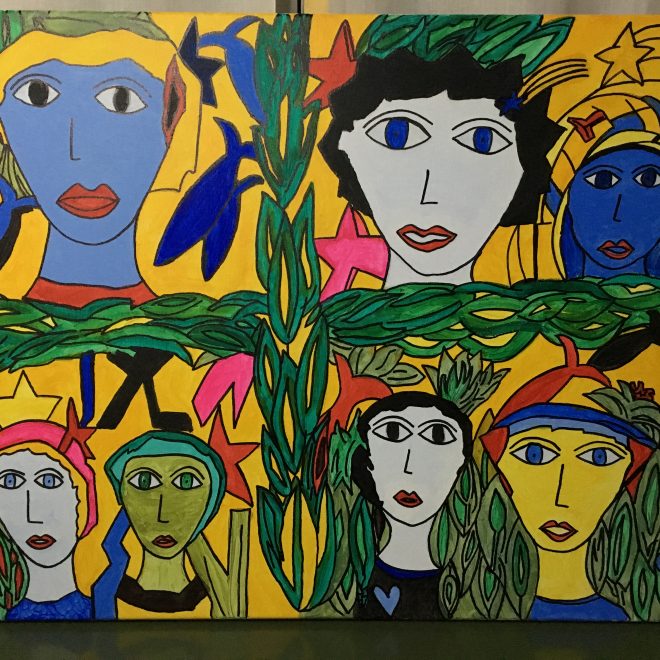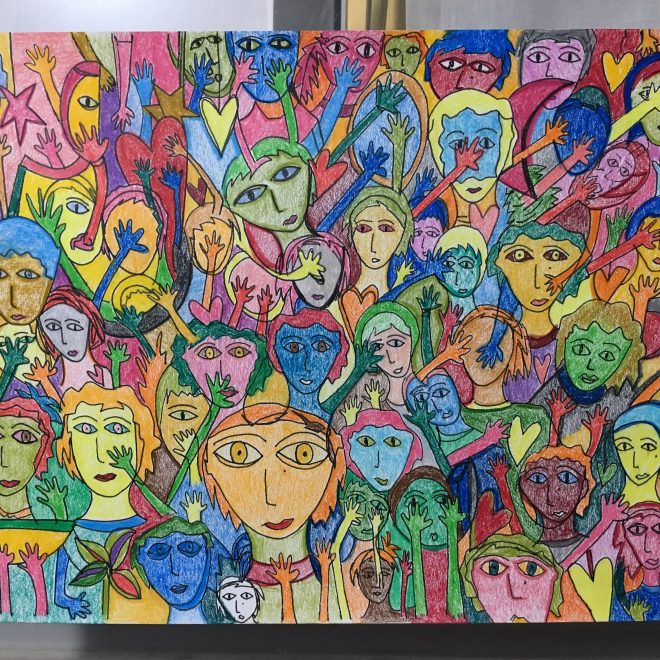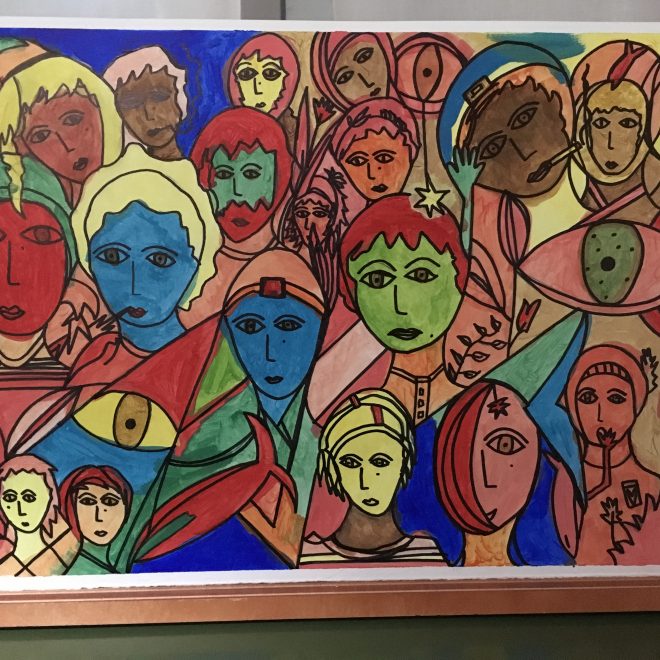Fatima Massoud
Born 1982 in Madrid, Spain
Living and working in Madrid, Spain
The work of Fatima Masoud Salazar boasts a feminist ideological intent women’s demand for autonomy. She aims to depict women’s psychological suffering, showing the double stigma of enduring a psychiatric disorder ‘while female’, and the way these two circumstances are perceived by the patriarchal system when they converge. She presents the feminist, collective response to this oppression through women’s networks – be these informal (friendship, collaboration and sisterhood) or formal and more organised (such as activism). The techniques she employs are acrylic on canvas, pencil on paper, and technical pens, producing both black-and-white and colour compositions.
With a heritage spanning three continents, an education in active teaching and learning based on the methodology of the Free Educational Institution (ILE), and a clear ideological calling from a young age, Fatima has participated in various movements and social projects, including 15M, the feminist movement and the anti-psychiatry movement. As a rank-and-file member of a left-wing organisation, she continues to be both a witness to and a participant of community and voluntary movements. Self-taught at the beginning, she is committed to lifelong development, looking for ways to be faithful to the image while also investigating new techniques and materials. She participated in Lon-art’s previous social exhibition, The Salon of Spanish Rejects, as well as various other contemporary art exhibitions.
Who is your shero and why?
My shero is Camille Claudel, a sculptor and graphic artist who was a victim of art world chauvinism and of psychiatry employed as a form of social control. She was confined to a psychiatric institution for 30 years, until her death.
How does the artwork you are presenting exemplify the exhibition theme of ‘sheroes’?As an artist and a feminist, I identify strongly with the concept behind Sheroes. I believe that women need consistently to speak up, as we continue to be made invisible.
